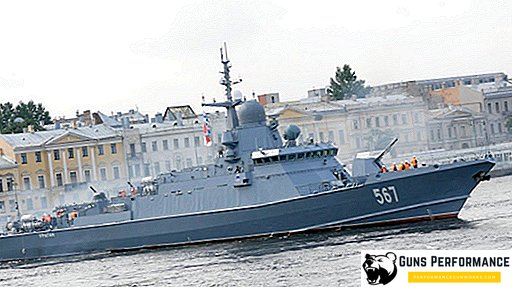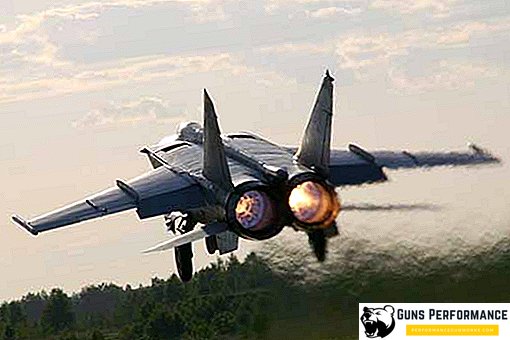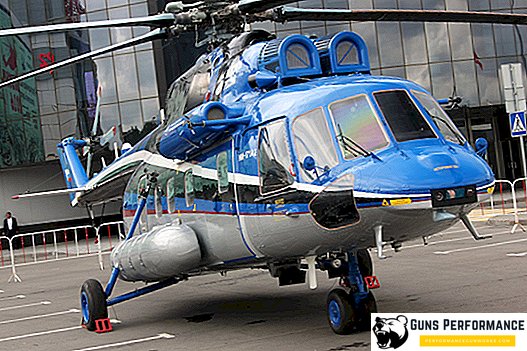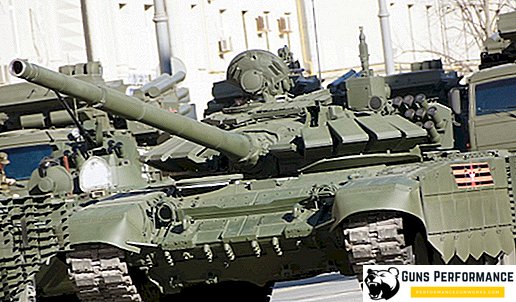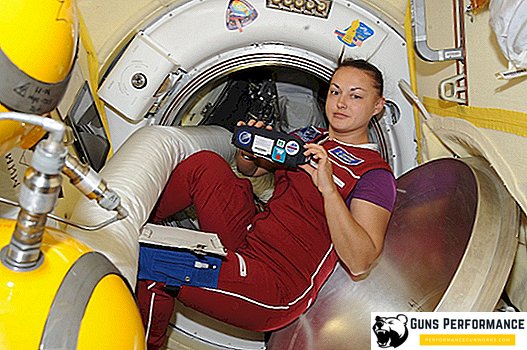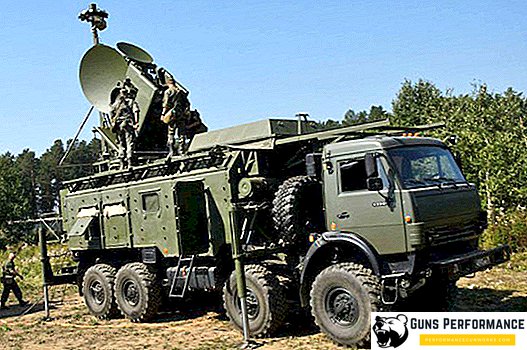From the first appearance on the battlefield, the tanks became the main striking force of the ground forces. Their appearance and weight changed, the defense and the means of attack became more perfect - but for more than a hundred years the tanks have been at the forefront of any offensive operation. In the large-scale battles of the two world wars, in the sands of the Middle East, among the mountains of the Caucasus and Afghanistan, these armored giants always went ahead, covering the infantry. The power of tank armor symbolized the unstoppable onslaught of attack. And what kind of victory without offensive? Today, like a hundred years ago, tanks still remain the basis of any land army.
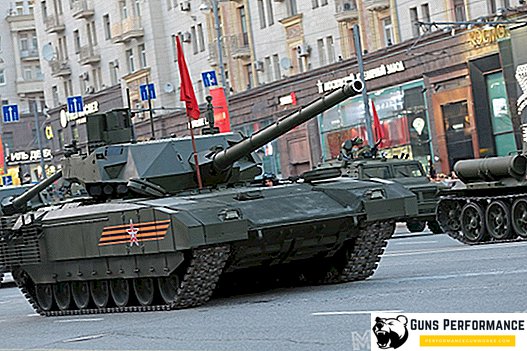
Over the past 50-70 years, tanks have received many new and very dangerous opponents on the battlefield. Anti-tank grenade launchers, guided anti-tank missiles, helicopters - the emergence of these tools has led to a significant increase in the vulnerability of tanks, as well as all armored vehicles. That is why it is not the first year (and more than one decade) that other experts and skeptics predict the decline of the tank era.
In the USSR and in Russia, there was always a special attitude to tanks. Their power and quantity were a visible symbol of the power of the state and its army.
May 9, 2018 at the Victory Parade in Moscow for the first time demonstrated the newest Russian tank T-14 "Armata". In the coming years, it should become the main combat vehicle of the Russian army. In addition, the T-14 is not only the main tank, the Armata was developed as a universal platform, on the basis of which a new infantry fighting vehicle will be created, an armored personnel carrier, an air assault vehicle, a tank support vehicle and many other types of equipment.

In the Russian media, the T-14 is called the “next-generation tank,” “a machine that has no world analogues.” Is it so? How outstanding are the performance of a combat vehicle? Unfortunately, a lot of information about this tank is still classified, which prevents us from making a fairly complete analysis of “Almaty”.
In order to better understand exactly how the Armata differs from its foreign counterparts, one should understand how modern tank building lives.

Tank generations
There are many different ways to classify tanks, they are divided depending on the tasks, weapons, mass, speed and layout. Many of the types of classification are clearly outdated, they are based on military doctrines of the first half of the last century. Recently, it has become quite popular to divide combat vehicles into generations, although this classification is not considered indisputable.
According to the latest classification, there are four generations of tanks:
- The first includes the cars created in the 50-60s of the last century, T-34-85, Panther, M26 General Pershing, T-54, Centurion fell into this category.
- The second generation includes cars that saw the light in the 60s-70s: T-64, T-62, M60, M60A1, English Chiften, Vikkers Mk 1, French AMX-30, early modifications of the German Leopard.
- The third tank generation includes the cars that appeared later than the year 80 of the last century: T-80, T-90, Chinese tanks Type 88 and Type 99, M1 Abrams, Challenger 1, Leopard 2.
- The fourth generation of combat vehicles can be attributed to promising developments that have not yet been adopted. The only representative of this generation of tanks so far is the Russian T-14 Armata.
T-72 tanks, some modifications of the Israeli "Merkava" and the German "Leopard" belong to the intermediate generation. Conditionally it can be called 2+. The latest modifications of the Abrams, Leopard, T-80 can be safely attributed to the 3+ generation.
Most of the leading tank-building powers are in no hurry to develop a new generation tank and are engaged in the modernization of old models. Modernization allows a relatively short time and at low cost to obtain a significant increase in the efficiency of the machine. However, it can not drastically improve its characteristics and eliminate the initial flaws in its design.
The Americans conducted nine upgrades of their Abrams; in Germany, for 32 years, they have not been tired of modernizing the Leopard 2 tank. Similarly, in France, Israel and Ukraine.
The American Advanced Research Agency (DARPA) is developing a new tank. It should be completely different from the modern ones. The designers focused on the speed and maneuverability of the machine. At the same time, work on the creation of robotic tanks equipped with artificial intelligence is in full swing in the USA.
Actively working on the creation of a tank weapon that uses unconventional physical principles (electromagnetic guns).
Many experts predict a new era associated with the emergence of robotic systems instead of tanks, managed by the crew. They believe that modern cars will soon be supplanted by drones.
The emergence of new cars in our days - rather the exception than the rule. Among the new tanks, we can recall the South Korean OT K2 Black Panther, the Japanese OT Typ 10, and also OT Altay made in Turkey. But all these cars stand out a little from the general range - they were created on the whole on the classical principles of armored vehicles of previous generations, albeit using the latest electronics, weapons and engines. But in the design of "Armata" were used a lot of completely new technical solutions, it is equipped with innovative protection and communication systems.
The developers claim that the T-14 tank is superior to any modern combat vehicle, but this raises many questions.

The history of the T-14 "Armata"
Improvement of tanks goes in four main areas. The security of combat vehicles increases, their firepower increases, mobility and command control increases. It should be noted that only an optimal combination of these criteria makes a good tank.
How high are the above properties of the T-14? Do they differ much from previous Russian cars, can you compare the Armata with advanced foreign tanks?

Work on the creation of a new tank began in 2010, immediately after the decision to terminate the project of the T-95 "Object-195". The developer of the machine was OJSC Uralvagonzavod (UVZ). The designers were given very tight deadlines: the military wanted the new tank to be mass-produced in 2018.
It was originally planned that the Russian armed forces will receive 2.3 thousand new tanks. The T-14 is still considered a prototype, but in 2018 the state tests of the machine are completed and only then will it be launched into mass production. It is reported that some of the elements of the new machine (engine, multi-layered armor) have already been successfully tested and produced on an industrial scale.
When creating a new car, the developments obtained during the work on the projects Object 195 and Object 640 were used. In particular, the monitor assembly of the tower was taken from Object 195.
Features of the T-14 "Armata"
The main features of the T-14, which make this car unlike other tanks, are:
- this is the first tank made on the basis of a universal platform;
- the crew is placed in an armored capsule (separated from the combat compartment by a bulkhead);
- uninhabited tower;
- Radar with active phased array;
- active protection complex (KAZ), which can intercept any ammunition.
Universal platform. The Armata is not only the main tank, but a tracked platform on the basis of which it is planned to create several different combat vehicles. These include heavy infantry fighting vehicles, tracked armored personnel carriers, self-propelled guns, tank escort vehicles, and a number of other types of armored vehicles. Such a decision should be recognized as practical and constructive, it allows you to seriously save on the production and maintenance of armored vehicles.
Armored capsule and uninhabited tower. The main feature of the new tank is its tower. Using the achievements obtained during the creation of "Object 195", the tower "Armata" made uninhabited, the crew is located in the bow of the tank and separated from the crew compartment. The media usually speaks of the “armored capsule” in which the crew is located, but probably the tank crews are simply separated from the combat compartment by a special armored partition.

The main problem of Soviet tanks (and later Russian and Ukrainian) is that the ammunition is in the fighting compartment of the tank, and if it hits a projectile or missile, it detonates. In this case, the machine inevitably fails, and the crew dies.
Soviet designers installed an automatic loader in the tank, which contains most of the ammunition, and the crew was reduced to three people (removing the loader). But such a decision was not optimal.
In many foreign tanks, the layout is somewhat different: the ammunition assembly is separate, it is isolated from the crew. The container with BC is equipped with special expelling panels. Therefore, the shock wave comes out and the tank crews are likely to survive. Charging most often occurs manually or with the help of special automatic loaders.
In Armata, this problem was solved in a peculiar way: the turret was made uninhabitable, the gun was charged with an automaton, and the crew was in front of the tank, isolated from the rest of the vehicle. It turns out that in the event of a blast of ammunition, tank crews are likely to survive, but the combat vehicle will have to be written off.
How good the idea of an uninhabited tower is is a rather controversial question. Similar developments in the 80-90s of the last century were conducted in the USA and Germany. There was also an uninhabited tower on the American prototype, and the crew was in an armored capsule. But from such a layout refused for several reasons. Firstly, the armored capsule occupied additional volume, which led to a decrease in the armor protection of the vehicle, and secondly, this arrangement of tank crews significantly worsened their all-round view. The tankers lost their sense of presence on the battlefield. Experts believe that even today it is impossible to create such an information system that would give a full 3-D review at 360 degrees.
Phased array radar The T-14 is equipped with a phased-array radar, similar to those installed on modern combat fighters of the latest generation. The radar is mounted on the turret of the tank and is able to conduct a 360-degree view without rotation. Such a radar can actually be useful in combat, given the likelihood of jamming by enemy tanks, which make them invisible in the infrared and optical range.

According to unverified information, the radar on the T-14 can simultaneously track 25 airborne and 40 ground targets at a distance of up to 100 km. Not all experts agree with such assessments, some of them believe that the radar station will be used as a component of the active defense system against anti-tank missiles and projectiles.
It should be noted that the installation on the T-14 of such a system should significantly affect the price of a new car.
T-14 "Armata" is equipped with the latest complex of active protection "Afganit". It allows you to fight with enemy shells and missiles at a distance of 10-30 meters from the tank. This complex covers the entire front hemisphere of the combat vehicle. In addition, information has emerged that a large-caliber machine gun of the tank will be used to destroy incoming rockets and sub-caliber shells, knocking projectiles at longer distances from the course.

T-14 tank design
Layout The new combat vehicle is likely to have a classic layout, with the location of the power compartment in the rear of the hull. If we talk about other combat vehicles that are planning to create on the basis of this combat platform, then it is possible and the front location of the engine.
In front of the hull there is a control compartment in which seats for three crew members are equipped, as well as instruments for monitoring and controlling the machine. In the central part there is a combat compartment with a turret, ammunition and automatic loading. At the stern of the tank is the engine compartment.

Engine. The T-14 is equipped with a 12-cylinder X-shaped diesel engine A-85-3A. It is manufactured at the Chelyabinsk Tractor Plant. Transmission - automatic with manual shift. Total gear 16 - 8 forward and backward. The engine has a variable power from 1200 liters. with. up to 1600 l. with. It takes only 30 minutes to replace it.
T-14 has a specific power of about 31 liters. s./t that provides the car with a very high speed - up to 90 km / h on the highway.

Suspension. Another novelty used on the "Armata" is the active suspension. Special sensors detect ground irregularities and displace rollers in the vertical direction. This increases the speed of movement of the tank over rough terrain, as well as the accuracy of shooting on the go. Active suspension should give the T-14 serious advantages in battle.

All nodes and mechanisms of "Almaty" are controlled by the information management system. It was she who identifies problems and tells the crew how to fix them.
Armament. The main armament of the tank today is a smooth-bore 125-mm gun 2A82-1M, remotely controlled. Its firing range reaches 7 km, the rate of fire - 12 shots per minute. According to its characteristics, this weapon surpasses the gun of the German tank "Leopard-2" - so, at least, the developers say. The 2A82-1M cannon can fire larger-size (length) ammunition, which is critical for sub-amber ammunition.

The gun bend sensor is installed on the gun. In the future, the serial combat vehicles can install 152-mm guns.
For the 2A82-1M cannon, new ammunition was developed: BPS Vakuum-1 (900mm), as well as Telnyk (it can be remotely eroded at any point of the trajectory) and URS 3UBK21 Sprinter. The T-14 will retain the ability to shoot guided missiles through a gun barrel. Shooting will be done with the Reflex-M missiles.
For some experts, the caliber of the gun of a new tank has raised certain questions. Say, the tank is new, and the gun has the same firepower as the old cars. However, if you believe the developers, the new weapon and new ammunition with the same caliber will be more effective.
The T-14 tank is equipped with the Kord anti-aircraft machine gun, which can be remotely controlled by a tank commander or gunner, as well as a PKTM machine gun paired with a gun. Machine gun "Kord" will be adapted for the destruction of enemy shells and missiles.
Protection. Developers particularly praise the tank's armor protection, claiming that special armor steel and other tank defense components can withstand the impact of any existing ammunition. Experts believe that the Armat’s armor should be equivalent to 1,000–1,100 mm of homogeneous armor for sub-caliber ammunition and 1,500 mm for cumulative.

Dynamic protection. The tank has the latest dynamic protection, which, according to the developers, surpasses the existing systems "Relic" and "Contact." According to them, the dynamic protection of the T-14 will be able to confidently withstand not only cumulative, but also sub-caliber ammunition, including the most modern. According to unverified information, on the "Armata" a promising dynamic protection "Malachite" was installed, which shoots two armor plates at once against the enemy ammunition.
It should be noted that the detailed characteristics of the dynamic protection of the T-14 are still kept secret.

Mine protection. The bottom of the tank is armored, it has a V-shaped, which in itself is already a defense against landmine explosions or mines. In addition, the tank is equipped with remote mine detectors and a system of remote exploding mines. In the design of the tank used special materials that absorb the blast wave, as well as chairs, reducing the shock load on the human body.
Missile defense. In addition to the active protection complex, the tank is equipped with a system for installing multispectral curtains, which makes the machine invisible in the optical and infrared range. Armata can identify and block laser-guided devices, as well as shoot heat traps against an ATGM with a thermal guidance head (Javelin or Spike). At the same time, the radar station allows the crew to see the battlefield even from behind the curtain.

There is information that the T-14 is equipped with electromagnetic means of protection, which are capable of disabling the electronics of incoming rockets with the help of a high-frequency electromagnetic pulse.
Stealth technology. The first thing that catches the eye in the guise of a new tank is its somewhat unusual shape. It is above its predecessors, the T-90 and T-72. The front of the car has numerous facets. This is explained quite simply: in developing the shape of the tank, technologies were used to make it less noticeable in different ranges of electromagnetic waves.
In addition to the hull shape, the tank has other mechanisms for reducing the visibility in the radar and thermal range. Т-14 оснащен теплоизоляцией, есть система смешивания горячих выхлопных газов с холодным воздухом. Еще одной интересной особенностью является возможность изменения сигнатуры (образа танка в ИК-диапазоне) с помощью дополнительных источников тепла. Дело в том, что ПТУРы типа "Джавелин" при наведении "запоминают" образ цели в ИК-диапазоне, и если во время полета он меняется, то это сбивает ракету с курса. Т-14 также может менять свой образ в радиодиапазоне и искажать свое магнитное поле (это сбивает с цели ракеты с магнитным наведением).


